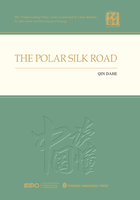
Proposal and Deepening of the BRI
The Belt and Road Initiative (BRI) was first proposed by Chinese President Xi Jinping in 2013. The “Vision and Actions on Jointly Building Silk Road Economic Belt and 21st Century Maritime Silk Road, ” an action plan announced in 2015, lays out a clearer blueprint for the development of the Belt and Road. For the BRI, the principle is “joint action, ” the mechanism is “cooperation”, and the ultimate goal is to “build a better future together.”(1)
The BRI comprises the land-based Silk Road Economic Belt and the 21st Century Maritime Silk Road. Both terms contain the phrase “Silk Road, emphasizing its cultural connotations. As early as the Spring and Autumn Period (770-476 BC) and Warring States Period (475-221 BC)(and even the Shang and Zhou Dynasties (1650-771 BC)), China began trading with other countries in Eurasia. From the Han Dynasty (202 BC to 220 AD) to the Tang Dynasty (618-907 AD), silk made up the bulk of the trade, hence the name “the Silk Road” for the trade route. The Silk Road is not only synonymous with ancient trade, but also a “symbol” of cultural exchange between China and Eurasia in history.(2) With the exchange of goods and people, the countries along the Silk Road drew on each other’s culture, creating splendid civilizations. The term “Silk Road, ” a cultural symbol of peace, friendship, interaction, and prosperity, is now used to convey to the world the ideals of “peace, cooperation, development, and win-win results.”(3)
Under the BRI, transcontinental infrastructure construction is taking place across Asia, Europe, and Africa, and a Silk Road University Consortium has been founded to promote cultural and educational cooperation. Furthermore, the Asian Infrastructure Investment Bank and the Silk Road Fund have been established to provide financial support for projects in the countries along the Belt and Road. Through Belt and Road cooperation, East Africa has built its first highway and modern railroad, Belarus has developed its automobile manufacturing industry, and Kazakhstan, the world’s largest landlocked country, has gained access to the sea for the first time.(4) Similar examples abound. Thanks to years of concerted efforts, the BRI has produced significant results across vast regions and is gaining momentum.
In the face of global warming and the changing international political landscape in the Arctic, China’s knowledge and practice regarding the Arctic have deepened. As such, new concepts are needed to integrate China’s participation in Arctic governance with the Belt and Road Initiative and the community of shared future for mankind. If China confines itself to the intrinsic framework of the Belt and Road, it may lack concrete plans for the long-term development of the Arctic. Therefore, it is necessary to further cultivate the consciousness of “a community of shared future for mankind” in the Arctic based on regional conditions. For this purpose, we must strive to seek the greatest common denominator amongst the interests of the different countries participating in the Arctic region. Then, based on this foundation, along with Chinese wisdom, an Arctic initiative, namely, the Polar Silk Road, can be initiated, which will allow for more targeted advice and suggestions for the joint development and governance of the Arctic region.